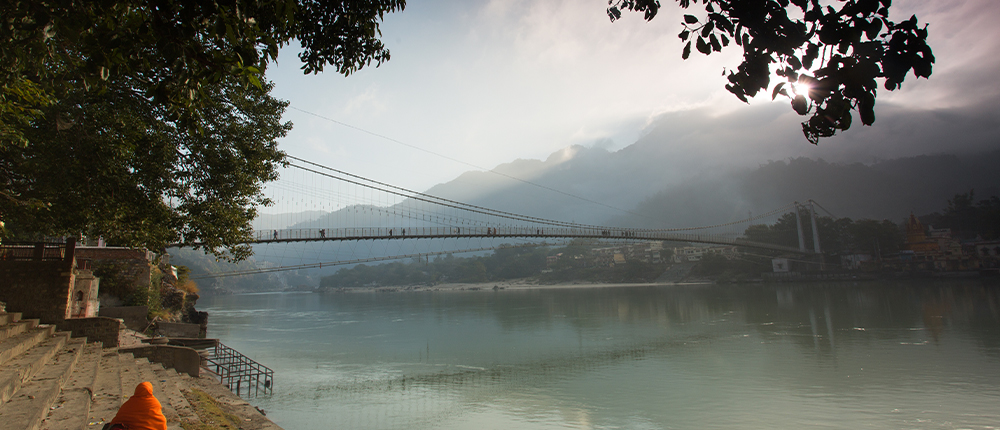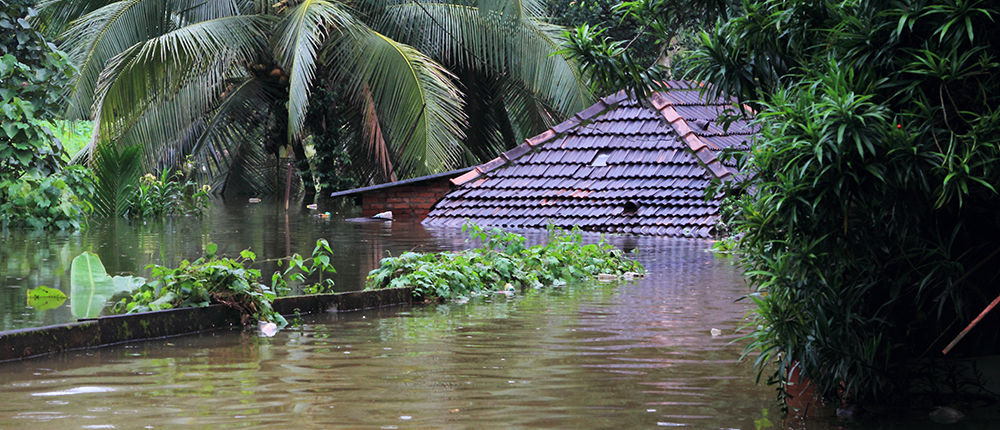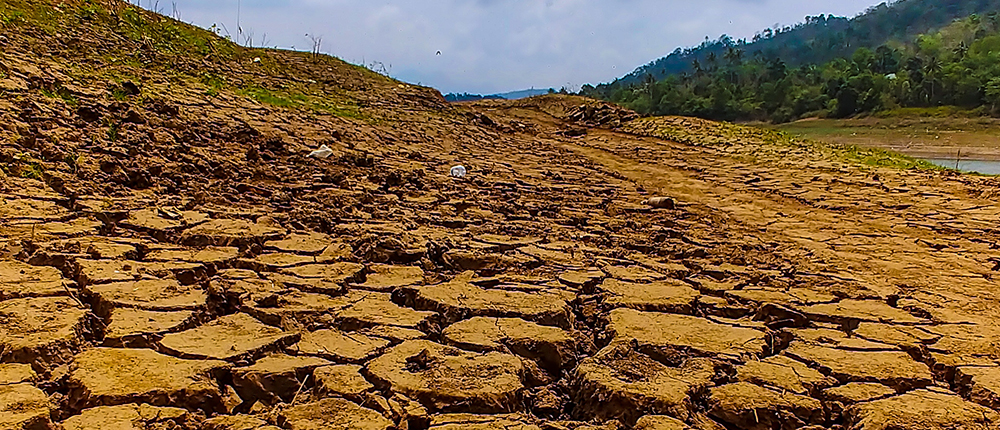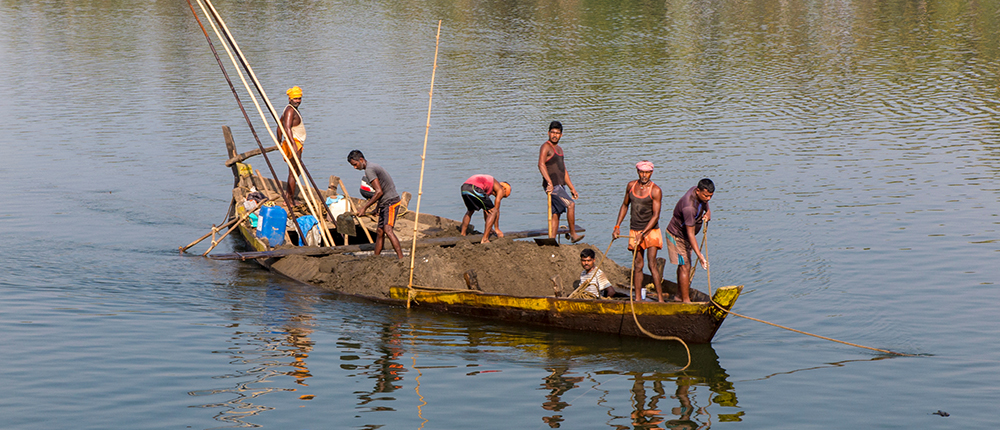The theme of this year's World Environment Day is Ecosystem Restoration. Ecosystem restoration can take many forms, such as growing trees, greening cities, rewilding gardens, changing diets or cleaning up rivers and coasts. In this regard, Simi S Nair says that human-induced drivers, such as dams, sand mining, over-extraction of groundwater, land use land cover changes, and indiscriminate disposal of untreated non-biodegradable solid wastes have significantly altered river ecosystems, impaired river water quality, and simultaneously increased the severity of disasters, such as droughts and floods.

In recent years, India has witnessed several natural as well as anthropogenic disasters. The devastating effects of the 2018 floods in Kerala have been a wake-up call to understand the threat of anthropogenic activities on river catchments. Accelerated implementation of developmental projects has caused irreversible damages to river ecosystems leading to considerable loss of life and property. Rivers are often viewed as an economically valuable resource for driving agriculture, tourism, aquaculture, and hydropower sectors. However, their environmental value far exceeds the value of the water they carry. Rivers not only function as a natural habitat to innumerable species of living organisms, they also nourish wetlands which in turn deliver numerous ecosystem services important for the survival of all forms of life, such as supply of clean water, flood risk reduction, protection from storms and droughts, prevention of soil erosion, groundwater recharge, nutrient retention, and maintaining local climatic conditions. However, human interventions in the form of construction of dams, illegal sand mining, overexploitation of aquifers, alteration of land use land cover (LULC) patterns, and indiscriminate disposal of untreated liquid and solid wastes, have negatively impacted several ecosystem services offered by rivers.
Changing Land Use Land Cover Patterns are Affecting River Flows
In Kerala, a land blessed abundantly by rivers, rapid socio-economic growth has fuelled a large number of infrastructure development projects causing changes in LULC patterns, which have drastically affected the flow regime of many important rivers. Changes in LULC patterns are observed as a result of accelerated deforestation, encroachment of floodplains, and conversion of agricultural lands into built-up areas.
According to a LULC study conducted on the Chalakudy river basin in Kerala, 70.5 sq. km increase in built-up area was observed in a span of 23 years from 1995 to 2018 leading to 22 per cent increase in flood peak, which contributed to inundation of larger area during 2018 Kerala floods.[1] The study noted that if the LULC pattern of 1995, with a smaller percentage of built-up area and higher percentage of forest cover, was maintained unaltered throughout these years, the flood peak could have been reduced by a factor of 22 per cent and the severity of devastation due to floods could have been minimized. A similar LULC mapping study conducted on the Pamba River basin in Kerala linked alternating cycles of recurring flood and drought to a marked rise in the built-up area from 31.30 sq. km in 1995 to 70 sq. km in 2012, and a steady decline in forest cover from 1156 sq. km in 1995 to 1114 sq. km in 2012.[2] Changes in LULC patterns altered flow regime of River Pamba, which was traditionally known as sustainable and perennial source of water.

During the 2018 monsoon floods in Kerala, maximum devastation occurred along the banks of the rivers Periyar, Chalakudy, and Pamba. Declining groundwater levels, a reduction in river water flows and occurrence of deep cracks both in the hills and floodplains after the flood event indicate failure of floodwater in replenishing groundwater and occurrence of long dry spell. The reason for reduced river flows was attributed to the leaching of topsoil from the hills upstream due to the destruction of natural vegetation (which would have supported storage of excess water in soil pipes as a result of the infiltration process), changes in land use patterns and granite quarrying in the upland areas altering the natural characteristics of the river.
Low flows have also been observed in River Gomti as a result of changing LULC patterns. A study observed reduction in forest cover, wetlands followed by fragmentation of rivers and floodplains coupled with exploitation of groundwater resources as contributing factors to drying of several tributaries feeding River Gomti, thereby causing reduced river flows and water scarcity.
Depletion of Groundwater Storage is Running Rivers Dry
During pre-monsoon dry periods, groundwater seeps into nearby rivers maintaining requisite river water levels. However, overextraction of groundwater has significantly altered this phenomenon causing a substantial reduction in river water levels. A declining trend in River Ganga's water levels at the rate of −0.5 to −38.1 cm/year between the summers of 1999 and 2013 has been attributed to the depletion of groundwater storage in the adjoining Ganga aquifers owing to excessive groundwater pumping.[3] For millions of people dependent on the waters of the River Ganga, reduced river flows will negatively impact drinking water supply, agricultural crop water demands, power-generating projects, and means of livelihood.

In-river Sand Mining and Floods
Exponential population growth has created increased demands for infrastructure development projects which require huge quantities of sand to meet construction requirements. However, sand is also vital for the sustainability of river ecosystems. The presence of sand and boulders help in regulating river flows, recharge groundwater, filter pollutants, and support biodiversity. Rapid urbanization and the increase in the number of construction projects fuel the need for illegal sand mining to reduce costs. Illegally mined river sand can have disastrous consequences including but not limited to change in river course, river-bank erosion, flooding, adversely impacting groundwater table, and habitat destruction for countless aquatic fauna and flora. Interruption in sediment transport due to extraction of sand from floodplain can force the river water flow to become sediment starved (hungry water) causing channel bed erosion, channel incision, and coarsening of bed material inducing channel instability and lowering of water tables leading to river bank degradation and therefore increasing the probability of floods.

Small Developmental Projects with Big Impacts
Hydropower projects of capacity below or equal to 25 MW are classified under small hydropower projects (SHPs) in India. These projects are promoted as a clean energy alternative to big hydropower projects. However, they are not as eco-friendly as they are deemed to be, since they can cause deleterious environmental impacts. SHPs can cause considerable flow reductions in the downstream end of constructed dam, altering stream geometry, water quality, and disrupting freshwater fish communities. In Himachal Pradesh, Hul hydropower project in Chamba or the Haripur Nallah project in Kullu, has negatively impacted local irrigation systems, water-powered mills, and fisheries. Construction of SHPs in ecologically fragile areas can cause fragmentation of rivers, decrease in river depth, and velocity resulting in siltation, drying of river beds, and habitat degradation.
Deteriorating Water Quality of India's Sacred Rivers
From time immemorial, rivers have been the nucleus of socio-cultural values defining their cultural and spiritual representation. Value of water has thus extended beyond just supporting and sustaining life for human civilization. Water has also played an important role in the well-being of people across diverse faith and traditions. Since the well-being of humanity is inseparably linked to a range of water-related functions that contribute to the vital elements of their overall social, cultural, and spiritual well-being, many cultures have supported and promoted protection and conservation of water.
In India, rivers such as Ganga, Yamuna, Saraswati, Indus, Narmada, Krishna, Godavari and Pamba are highly revered and even personified as deities in Hinduism. Hindus have an organic association with these holy rivers which forms an integral part of their festivities, culture, and customs from birth to death. Once pristine, waters of these holy rivers are now carrying massive amounts of untreated sewage. Apart from industrial effluents, these rivers are known to carry huge amounts of untreated solid waste generated during religious festivals. Reports indicate one such large religious gathering on the River Ganga in 2019, generated around 2000 tonnes of unsegregated solid waste.[4] This raw sewage left untreated owing to non-functional/partly functional sewage treatment plants, made its way into River Yamuna which ultimately pollutes waters of River Ganga making it unfit for human consumption as well as negatively impacting aquatic flora and fauna. Similarly, study points towards another religious gathering in 2018, where 100 million litres per day (MLD) of sewage was generated and exceeded the sewage plant capacity of 45 MLD causing untreated effluents to drain into the River Ganga.[5] Open defaecation near river banks, bathing and disposal of non-biodegradable wastes during these mega festivals, generate huge quantities of toxic solid and liquid wastes which are left unmanaged and end up in the drains and rivers, thereby choking and polluting them. These rivers receive a lot of non-biodegradable wastes in the form of idols, plastic garlands, frames, wrappers, bottles, and so on after the festivals. Immersion of idols made of Plaster of Paris (PoP), that contain calcium sulphate hemihydrate with small quantities of plastic and cement, often covered.

In toxic paints during festivals takes several years to degrade, and reduces dissolved oxygen levels of water, threatening aquatic life. In the past, traditional rituals were performed using biodegradable decorations and frames made principally of clay, mud, flowers, and cotton fabrics. These sustainable practices have now been completely abandoned and instead several non-biodegradable items containing toxic and harmful substances are used, which are economically cheaper but detrimental to river water quality and environment. The immeasurable and complex value of water for social, cultural and spiritual needs of the human population has not faded, rather increased with rising population, improvement in economic status, and access to transport and communication. At the same time, it has to be noted that industrialization and urbanization have alienated human populations from their rivers, thereby disintegrating their vital role in water conservation and protection which has tremendous impact on the water resources of the country.
Conclusion
Human-induced drivers, such as dams, sand mining, over-extraction of groundwater, LULC changes, and indiscriminate disposal of untreated non-biodegradable solid wastes have significantly altered river ecosystems, impaired river water quality, and simultaneously increased the severity of disasters, such as droughts and floods. Fragmentation of river basins, pollution, alteration of river flows and drying up of groundwater storage have significantly impacted food production, livelihoods and have caused water scarcity along with causing severe public health impacts. Trade-off analysis between developmental projects and river ecosystem functions is a critical challenge lying ahead of decision-makers at the local and national levels. River ecosystem service assessments with improved insights into interactions between various ecological and socio-economic processes will help in decreasing potential damage to the quality and quantity of existing water resources from anthropogenic activities. Sustainable water resource management calls for conservation programmes and policies focused on hydrogeological characteristics of the watershed as well as increasing awareness about zero waste generation, and adopting eco-friendly traditional practices. The current state demands additional measures built upon comprehensive scientific research dedicated to altered river ecosystems and their future impacts on our environment. While the pressures from socio-economic development incessantly rise, the implementation needs a profound understanding of scientific research and local conditions. Increased community awareness, planning, improved institutional coordination, and stringent implementation for addressing crucial issues related to river ecosystems need to be augmented. Effective policy formulation requires holistic approach to current issues related to water management. Enhanced community participation to better understand lessons from the past, present impacts and future development goals coupled with extensive ecosystem service assessments, hydrological and hydrogeological analysis, will help in implementing successful national policies for valuable water resources management.
Simi S Nair is Consultant, Mu Gamma Consultants Pvt. Ltd, Gurugram, Haryana.
This article has been first published in TerraGreen online magazine.
Footnotes
[1] Parvathy and Thomas, 2021
[2] Mayaja and Srinivasa, 2017
[3] Mukherjee, et al., 2018
[4] Details available at https://www.downtoearth.org.in/news/pollution/faith-to-filth-thanks-to-kumbh-prayagraj-sinks-in-solid-waste-64579#:~:text=The%20Kumbh%20Mela%20generated%20more,the%20open%E2%80%94untreated%20and%20uncovered. Last accessed on May 21, 2021.
[5] Details available at https://timesofindia.indiatimes.com/city/dehradun/ganga-left-polluted-with-human-waste-as-kanwariyas-defecated-in-open-during-yatra/articleshow/65392408.cms. Last accessed on May 21, 2021.

